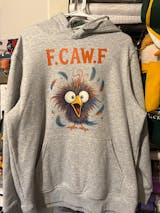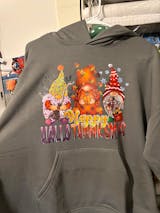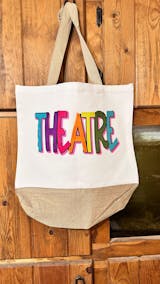DTF 101: Your Guide to Direct-to-Film Printing
DTF Prints 101: Everything You Need to Know About Direct-to-Film Printing process
The ability to create DTF Prints has revolutionized the garment customization industry, offering a versatile and vibrant alternative to traditional methods like screen printing and heat transfer vinyl. This technology is particularly beneficial for custom apparel printing, as it allows for vibrant and durable prints on various materials, making it an ideal choice for businesses looking to produce customized apparel.
If you’re intrigued by the world of DTF prints and looking to explore its potential for your creative projects or business, you’ve come to the right place. In this comprehensive guide, we’ll dive into the intricacies of buying and using DTF transfers and print. We’ll discuss its advantages, including the benefits and functionalities of DTF printers, which are known for their efficiency and unique capabilities in producing high-quality prints on various fabrics. Provide you with practical insights to help you master the art of creating stunning DTF decorated apparel.
So, whether you’re a budding entrepreneur or an experienced designer, read on to discover how this incredible technology can elevate your creations and unlock new possibilities in the world of garment customization.
Introduction to DTF Printing:
Direct-to-Film (DTF) printing is a cutting-edge garment customization method that has taken the industry by storm. Unlike traditional printing techniques like screen printing or heat transfer vinyl, DTF printing involves printing designs directly onto a special film, which is then heat-applied to the fabric. The printing process involves transferring ink onto a DTF film, which is then applied to textiles using heat. This innovative process uses a unique blend of pigment inks and a powder adhesive, resulting in vibrant, high-quality prints that can be transferred to a wide range of materials.
There are several advantages of DTF printing over other methods:
-
Versatility: DTF prints can be applied to various fabric types, including cotton, polyester, and blends, making it suitable for a wide range of applications. Different types of DTF films, such as hot peel, cold peel, and instant peel, offer specific benefits in the printing process.
-
Detail and Color Range: DTF printing allows for intricate designs and an extensive color palette, enabling creators to produce detailed, vibrant prints.
-
No Pre-treatment: Unlike Direct-to-Garment (DTG) printing, DTF does not require pre-treatment of the fabric, reducing the overall production time and complexity.
-
Low Minimums: DTF is an excellent choice for small-batch or one-off custom garment orders, as it does not require the setup costs associated with screen printing.
However, there are also some limitations to consider:
-
Print Durability: While DTF prints are generally long-lasting, it is imperative that a heat press is used for consistent heat and pressure application. A household iron can work on DTF transfers for hobbyists but is not recommended if you are selling your items.
-
Equipment Cost: The initial investment in DTF printing equipment can be high, especially for small businesses or individuals starting out. Be sure to shop around for a heat press to get started. You can always upgrade in the future.
-
Production Speed: Although DTF printing is faster than DTG for small quantities, it may not be as efficient for large-scale production compared to screen printing. Print quality is influenced by factors such as ink absorption and the compatibility of inks with specific printers, which are crucial for achieving high-quality results.
By understanding the ins and outs of DTF printing, including its benefits and limitations, you can make informed decisions about whether this innovative method is the right choice for your garment customization needs.
**DTF Heat Press Transfer Process:**
The heat transfer process is a crucial aspect of DTF printing. That’s because it ensures that the printed design adheres correctly to the fabric, resulting in a high-quality and durable print. In this section, we will walk you through the steps involved in the DTF heat transfer process and provide guidance on how to achieve optimal results. A heat press machine is essential in this process, as it provides the necessary temperature and pressure settings to ensure a successful transfer.
-
Prepare the design: Begin by creating your design using graphic design software, ensuring that it meets the necessary resolution and color requirements for DTF printing. 300DPI is recommended.
-
Print the design: Using a DTF printer, print your design onto the specially coated DTF transfer film. The printer will first lay down the colored ink, followed by a layer of white ink, and finally, a layer of powder adhesive.
-
Powder the printed film: Once printed, the DTF Print film needs to have the adhesive powder applied to the ink. Hot melt adhesive powder is crucial in this step as it ensures a reliable transfer of designs onto fabrics. And then it gets dried - this can be done using a conveyor dryer or heat press with a hover function. Ensure that the film is properly cured to avoid issues during the transfer process.
-
Position the transfer: Place the printed DTF transfer film onto the garment, with the design facing down and the adhesive side in direct contact with the fabric. Ensure the transfer is correctly aligned and positioned. You can use special tape that can handle the heat to hold the transfers if needed.
-
Apply heat and pressure: Using a heat press, apply heat and pressure to the transfer for a specific duration (typically between 10-15 seconds) at a temperature of around 160°C (300-320°F). Follow the Provided Heating and Press Instructions. The exact time and temperature may vary depending on the transfer film, adhesive, and fabric, so always refer to the manufacturer’s recommendations.
-
Peel the transfer film: Once the heat press cycle is complete, wait for the design to entirely cool. Then carefully peel off the transfer film, starting from one corner and pulling it back at a consistent angle. The design should now be securely adhered to the fabric.
-
Optional post-press: For added durability, some DTF users recommend a brief post-pressing step. Cover the transferred design with a non-stick parchment paper or Teflon sheet and press it again for a few seconds at the same temperature.
By following these steps and using the right equipment, you can ensure that your DTF heat transfers result in vibrant, high-quality prints that adhere well to your chosen fabric. Always test your process on a sample garment before proceeding with a full production run to fine-tune your settings and achieve the best possible results.
DTF T-shirt Printing:
DTF printing has emerged as a popular choice in the garment industry due to its versatility, vibrant color reproduction, and ability to print intricate designs. Proper pretreatment of garments is essential for achieving a high quality print, as it ensures the ink bonds effectively with the fabric and enhances color vibrancy. Here, we’ll explore the applications of DTF prints and how its helping people all over build their brands. We provide a step-by-step guide to creating custom DTF printed T-shirts, and share valuable tips and best practices.
Applications of DTF printing in the garment industry:
-
Custom T-shirts for small businesses, events, and promotions: DTF printing enables small businesses to create eye-catching, customized T-shirts for promotional events or marketing campaigns, helping them stand out and attract potential customers.
-
Personalized clothing for fashion brands and designers: With its ability to produce intricate and vibrant designs, DTF printing allows fashion brands and designers to craft unique, personalized garments that showcase their creative vision and establish a distinct style.
-
Team uniforms and merchandise for sports clubs and organizations: Sports teams can benefit from DTF printing by producing durable, high-quality uniforms and merchandise featuring their team logo and colors, fostering a sense of unity and pride among players and supporters.
-
Fundraising and awareness campaigns for non-profit organizations: Non-profits can utilize DTF printed T-shirts to raise awareness and funds for their causes, creating visually appealing garments that effectively communicate their message and inspire supporters to take action.
-
Limited-edition apparel for artists and musicians: DTF printing offers artists and musicians the opportunity to create limited-edition apparel featuring their artwork or band logo, providing fans with exclusive merchandise and generating additional revenue for their creative endeavors.
Compared to traditional printing methods like screen printing, DTF printing does not require preparing individual screens for each color, making it more efficient for producing detailed and multicolored designs.








